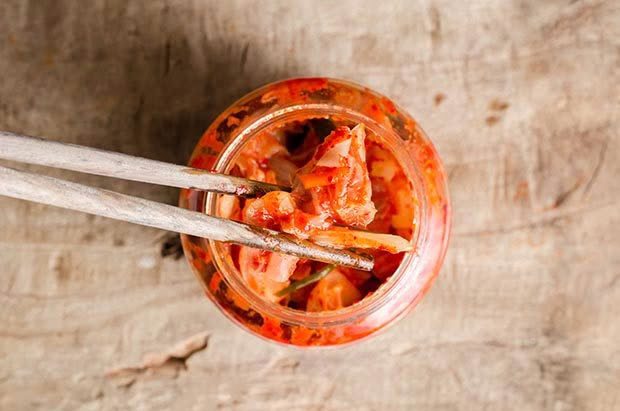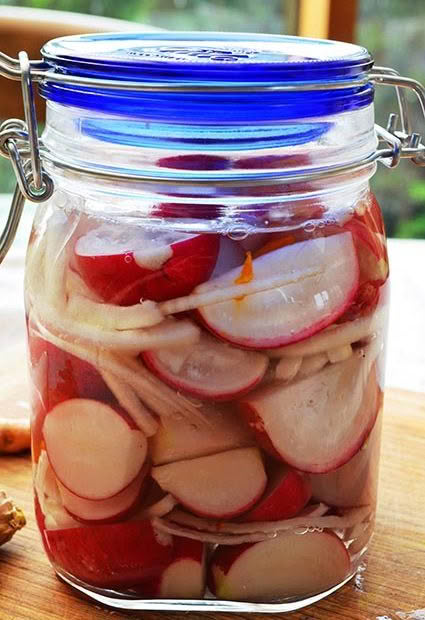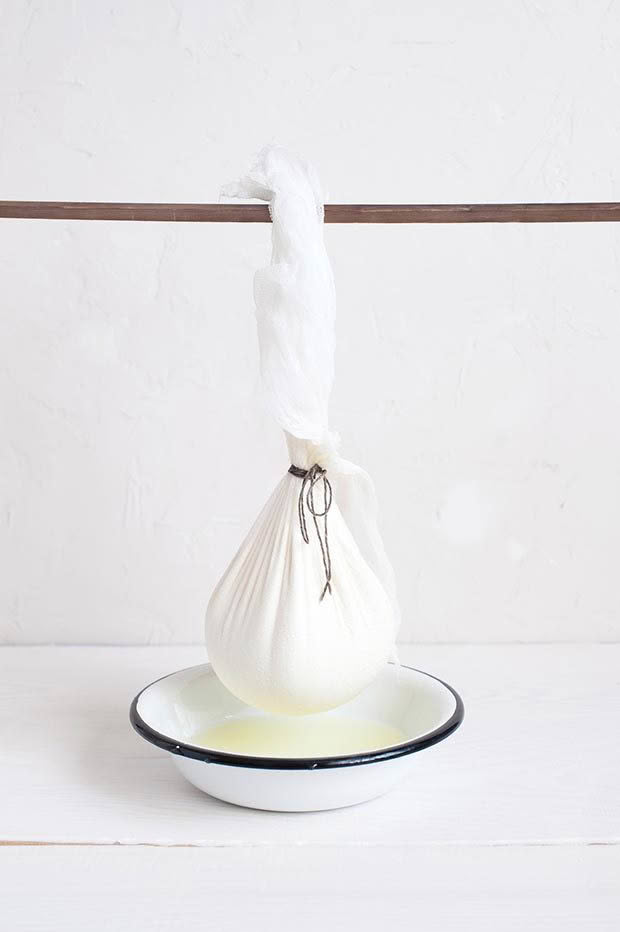A beginner’s guide to fermenting vegetables

From kombucha to kimchi, sauerkraut to sourdough, kefir to kashk, the fermentation bug is catching because it’s tasty, easy and good for you.
Words and Photos: Jenny Garing
There is no doubt that fermented food is good for you. The good bacteria that live in your gut and show up in fermented foods improve digestion, boost immunity and – according to some preliminary studies – may even help us lose weight.
Research is still emerging on just how important these mighty microbes might be for our health, but there is no doubt we need them. The best thing you can do to encourage their growth is to eat fermented foods.
The fermentation process encourages essential bacteria such as Lactobacilli and Bifidobacteria to flourish. This makes fermentation a good source of probiotics. When fermenting something like vegetables, they are submerged in a salty brine during preparation to kill off dangerous, pathogenic bacteria.
The good bacteria break down lactose and other sugars and starches in the food, making digestion easier. Once these reach your gut, they continue to help break down food and keep out bad guys like E. coli and C. difficile.

Fermenting radishes.
Incorporating healthy foods into your diet can get expensive, but not so with fermented foods. However, some fermented foods like kombucha, kefir or sourdough bread do require daily maintenance and lots of fridge space.
Read more: Fermented beetroot recipe
For these nutritious fermented products you need to keep alive their fermentation starter by feeding it regularly and this can be a bit off-putting for those starting out in fermented foods.
Why not start off easily and cheaply without a requirement for lots of fridge space and care?
You can grow your own vegetables at home for a couple of dollars, then use sea salt to ferment them, a very inexpensive way to get started. For those new to fermented foods like reluctant spouses and picky children, it’s often best to begin their introduction by fermenting foods the family already enjoy – homemade tomato sauce and homemade yoghurt are good choices.
But many vegetables from the garden can be easily fermented and then used in dishes the family already like to eat.
When making any of these fermented foods you can use whey if you have any, instead of salt, to kill off the bad bacteria and introduce the good bacteria to the food.
If your family refuse to eat any of these, you can console yourself with the fact that beer and cheese are also fermented foods!
TIP: START WITH CLEAN CONTAINERS

Fermenting pot.
Vegetables can be packed into glass jars, or plastic containers to ferment, or you can use a fermentation pot if you have one.
These need to seal 100% so they don’t allow any contaminants in, eg from the air.
When using glass jars, sterilise them by putting them through your dishwasher on a hot cycle.
Alternatively give clean jars 10 minutes in a hot oven (200°C) or boil them in water for 10 minutes.
Leave them to cool completely.
FERMENTED KUMARA

This is a variation on poi, the fermented taro of Polynesia where the taro root was buried for up to a few months to ferment.
INGEDIENTS
1kg kumara
5 tbsp salt OR 1 tbsp salt and
4 tbsp whey
METHOD
Prick the kumara in several places and then place on an oven tray and bake at 150°C for about 2-3 hours (or until soft).
Peel and mash with the salt (or salt and whey).
Place in a bowl and cover it with a tea towel. Leave at room temperature for 2 days.
Transfer to an airtight container and store in the fridge.
This can be spread on crackers like cream cheese or used as the base of dips. It is also an excellent baby food. You could also use this instead of the cream cheese in the carrot tart.
TIPS FOR USING WHEY
Whey can work in place of salt as it acts as an inoculant, speeding up the production of lactic acid, which preserves the food.
However, this speedy action can mean veges go mushier than if the ferment is done with salt.
Whey needs to be properly strained to remove solids (a coffee filter lining a sieve is a good option) and allowed to gently drip out overnight.
Use fresh whey – it does add its flavour to a ferment, so the older it is, the more flavour it will add.
READ MORE
Love this story? Subscribe now!
 This article first appeared in NZ Lifestyle Block Magazine.
This article first appeared in NZ Lifestyle Block Magazine.
